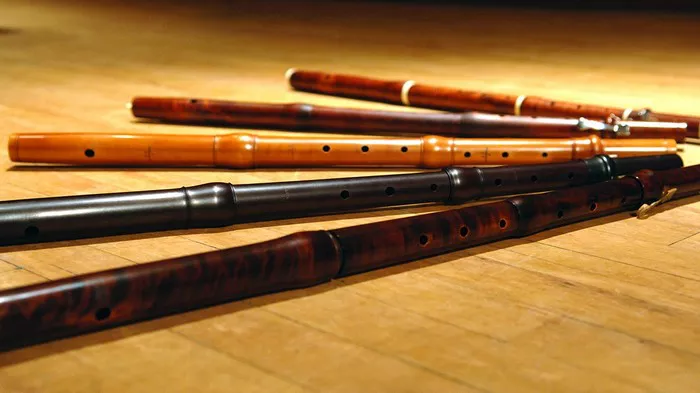The pan flute, also known as panpipes or syrinx, is a fascinating wind instrument with deep historical roots and a distinctive sound. In this article, we delve into its definition, origin, acoustics, materials, and more to provide a comprehensive understanding of this ancient musical tool.
What is the Pan Flute?
The pan flute is a wind instrument consisting of a series of tubes, typically made from bamboo or other materials, of varying lengths. These tubes are closed at one end and open at the other. The player produces sound by blowing horizontally across the open ends of the tubes, causing the air within to vibrate and thus producing notes of different pitches.
The term “pan flute” is derived from Pan, the Greek god of nature and shepherds, who is often depicted playing such an instrument. Alternatively known as panpipes or syrinx, the pan flute has a long history dating back to ancient times, with variations found in cultures around the world.
Origin and Mythology
The pan flute’s association with Greek mythology adds a layer of mystique to its origins. According to legend, Pan, the god of rustic music, forests, and shepherds, crafted the first pan flute from reeds growing by the riverbanks. The instrument came to be known as the syrinx, named after the nymph Syrinx, whom Pan pursued. To escape his advances, Syrinx begged the river deity to transform her into a group of reeds. In doing so, she inadvertently gave Pan the inspiration to create the pan flute, fashioned from the very reeds into which she had transformed.
The tale of Syrinx and Pan not only explains the origin of the pan flute but also underscores its association with nature and pastoral life. This connection resonates throughout history, influencing its symbolism and cultural significance in various civilizations.
Acoustics and Sound Production
Acoustically, the pan flute operates on principles similar to those of other end-blown flutes. When the player blows air across the edge of the open end of a tube, it splits into two parts—one part enters the tube and the other continues outside. This causes the air inside the tube to vibrate, producing sound. The pitch of the note produced is determined primarily by the length of the vibrating column of air within each tube.
Each tube in a pan flute is finely tuned to produce specific notes. Traditionally, this tuning was achieved by carefully cutting and adjusting the length of each tube. Modern techniques may also employ materials such as wax, rubber stoppers, or other objects placed inside the tubes to fine-tune their pitch. The craftsmanship involved in tuning a pan flute is crucial to ensuring that it produces accurate and harmonious notes across its range.
Materials and Tuning
Pan flutes are crafted from a variety of materials, each influencing the instrument’s sound and durability. Bamboo is a popular choice due to its natural resonance and flexibility. Other materials used include giant cane, wood, plastic, metal, and even clay. The choice of material often depends on factors such as availability, cultural tradition, and desired tonal qualities.
In traditional craftsmanship, the diameter and length of each tube are critical factors in determining its pitch. Different cultures have developed specific techniques for tuning pan flutes, often involving inserting objects such as pebbles, wax, corks, or rubber stoppers into the tubes. This meticulous process ensures that each tube resonates at the correct frequency to produce the desired musical scale.
SEE ALSO: How to Play the Aulos Flute
Variations and Global Influence
Pan flutes vary significantly in size, number of tubes, and tuning across different cultures and musical traditions. In South America, particularly in the Andean region, the zampona or sikuri is a type of pan flute with multiple rows of tubes, creating a rich, polyphonic sound. In Romania, the nai is a pan flute with a different arrangement of tubes, offering a distinct tonal quality. The diversity of pan flute designs reflects its adaptability and appeal in diverse musical contexts worldwide.
Throughout history, the pan flute has transcended cultural boundaries, appearing in traditional music, classical compositions, and contemporary genres. Its hauntingly sweet tones evoke a sense of pastoral tranquility and ancient wisdom, making it a cherished instrument in both folkloric ensembles and solo performances.
Contemporary Use and Revival
In recent years, the pan flute has experienced a resurgence in popularity, thanks to musicians exploring its versatility in various musical genres. Modern interpretations blend traditional techniques with contemporary compositions, expanding the instrument’s repertoire and appeal to new audiences. Artists such as Gheorghe Zamfir and Leo Rojas have showcased the pan flute’s emotive power on global stages, renewing interest in its timeless beauty.
Technological advancements have also influenced the pan flute’s evolution, with innovations in materials and construction techniques enhancing its playability and tonal range. From acoustic ensembles to electronic adaptations, the pan flute continues to evolve while retaining its distinctive charm and cultural significance.
Conclusion
The pan flute, with its ancient origins rooted in mythology and nature, remains a testament to human creativity and musical expression. From the reedy banks of ancient rivers to concert halls around the world, its ethereal tones have captivated listeners for centuries. As we continue to explore and appreciate the diversity of musical traditions globally, the pan flute stands as a symbol of cultural heritage and artistic innovation. Its melodious voice carries forward the stories of ancient gods, nymphs, and shepherds, reminding us of the timeless power of music to transcend boundaries and inspire the soul. In conclusion, the pan flute invites us to listen, learn, and appreciate the beauty of sound crafted from nature’s humble reeds—a testament to the enduring legacy of one of the world’s oldest musical instruments.


